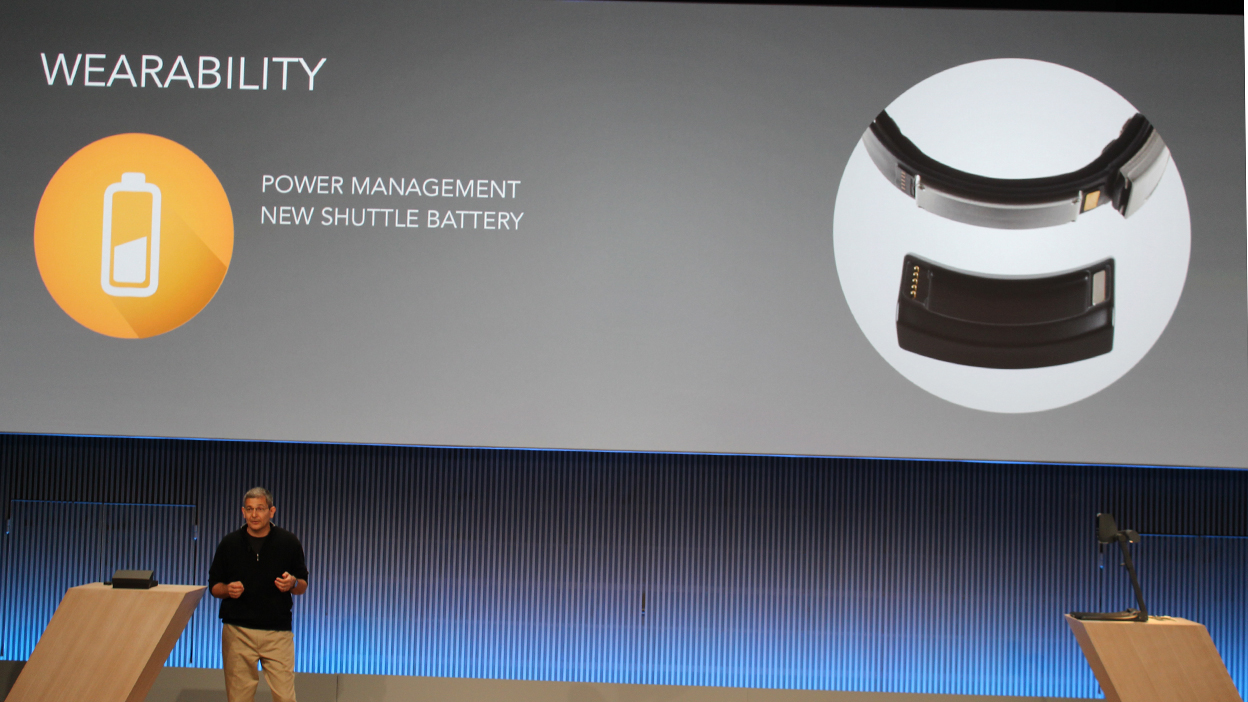Samsung Simband: what you need to know

Samsung Simband is shaping up to be the this year's most advanced health tracking gadget, but it's an open sensor prototype you won't be able to buy in stores.
Instead, developers are being tasked with taking Samsung's reference design and open data platform unveiled at its Voice of the Body event last week, and inventing a new era of wearable sensors.
The Simband, in turn, represents the future of wellness metrics rather than a new product. It's where Samsung and creative innovators are going to take tracking devices down the line.
The open platform's advanced statistics give more insight into your body than the average Fitbit Force and Jawbone Up24, and its real time data arrives on a smartwatch-like display.
Simband may be the South Korean electronics company's best weapon against Apple's iWatch and HealthKit duo expected to be released alongside iOS 8 later this year.
Simband specs
The specs of long-been-announced Android Wear smartwatches Moto 360 and LG G Watch remain a mystery, but Samsung wasn't shy about sharing its prototype's internals right away.
Simband is a sensor-filled modular platform that has a 1GHz dual-core ARM A7 processor behind it. The entire board measures 14 x 34mm, or half the size of a typical SD card.
Sign up for breaking news, reviews, opinion, top tech deals, and more.

This 28nm chipset is accompanied by both WiFi and Bluetooth. Samsung reasons that the next generation of developers who are making health-focused wearables need direct cloud access.
WiFi is more reliable than Bluetooth for these data-seeking developers, and the two antennas are now small enough that both can be included.
It also helps that the device's watch-like design spreads the internals throughout the band, not just behind its Gear 2-like display.
Of course, Simband's modular design means developers can add to and subtract from the specs at will. Simband is just their starting point.
What can Simband track?
Simband goes beyond calculating simple steps and miles walked thanks to its multimodal sensors for optical, electrical and physical methods of collecting real-time health data.
There's enough here for Samsung to declare that "products based on Simband will contain more advanced body sensors than any other wearable."

Bioimpedance sensors certainly back up this bold statement, as the band can measure blood flow and body fat noninvasively, a world's first for an open reference design platform.
Photoplethysmogram sensors are being designed to calculate heart rate and blood pressure by shining a light on your skin to observe the changes in blood flow at the microvascular level.
These PPG sensors use red and green lights at various wavelengths, which provide for better accuracy than the Samsung Galaxy S5 heart-rate monitor.

Electrocardiogram waves are captured with two unique probes in order to track heartbeat rate and regularity. There's an ECG in the band and another in the clasp. Touching your non-watch hand to the clasp creates an electrical loop throughout your body.
ECG and PPG also work together to map your pulse arrival time in order to provide an "estimated" blood pressure.
Skin is very in when it comes to Simband's metrics. Skin temperature and galvanic skin response can provide clues about your core temperature and stress levels.
Simband battery life
One of the most promising Simband innovations that isn't strictly limited to health gadgets is its unique "shuttle battery" design.
The shuttle battery magnetically clips into Simband and charges the device while you wear it, typically at night.

Pop out the battery in the morning when Simband is charged and all of a sudden there's no reason to ever take off this wearable.
Its a true 24/7 wrist-worn gadget and the envy of every Gear 2 and Jawbone Up24 user who has to take off and plug in their device every few days.
- 1
- 2
Current page: Simband specs, metrics and battery design
Next Page Simband vs iWatch and HealthKit